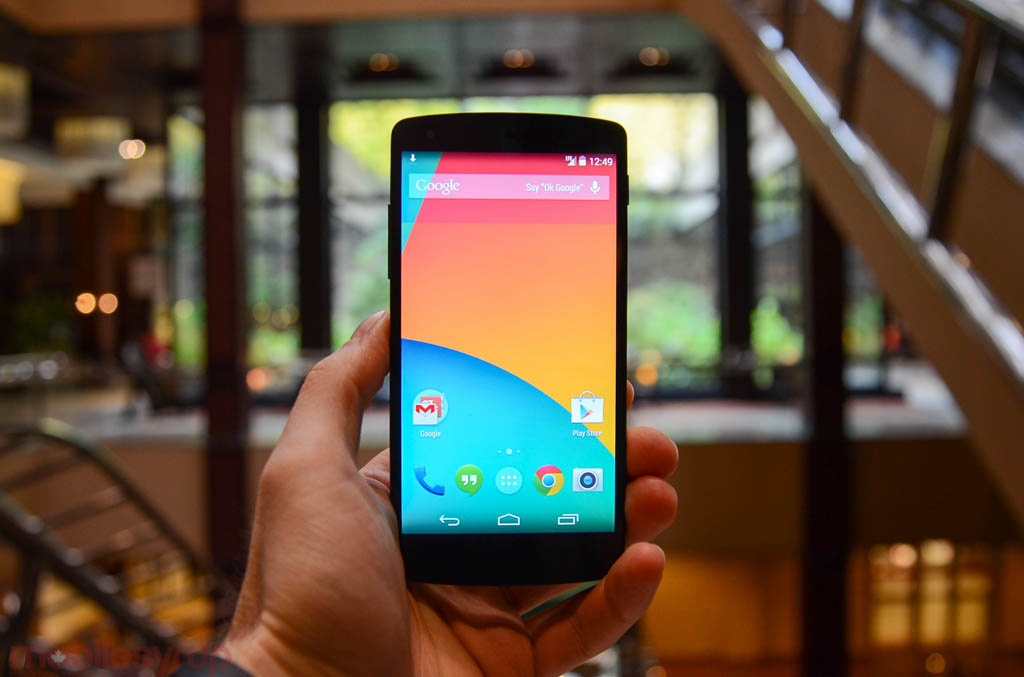
Though we’re still getting over the excitement of the announcement — go buy one and return here, quickly! — but the Nexus 5 is here and we’ve had a brief chance to play with it.
The TL;DR version is that this is a very nice phone, and is a bargain at $399 CDN for the 32GB LTE version. This is the device that many Nexus 4 owners were waiting for, and should be a fantastic addition to any pocket.
The Phone
At the outset, you can see how similar it is to its predecessor, and how much it differs from the device on which it is ostensibly based. While the Nexus 4 shared the same build materials and general design as the LG Optimus G, it would be hard to guess the Nexus 5 shares the same lineage as the G2, though in many ways its hardware is identical.
You’ll immediately notice that it is flatter and more angular than the Nexus 4, and at 8.59mm thickness and 130 grams, it is also thinner and lighter. At the same time, it boasts much-improved specs, including a 4.95-inch 1080p IPS LCD display with Gorilla Glass 3; a Snapdragon 800 SoC clocked at 2.26Ghz, with an Adreno 330 GPU; 2GB of DDR3 RAM and 16-32GB internal storage; an 8MP camera with optical image stabilization and a 1.3MP front-facing camera; a 2300mAh non-removable battery; dual-band WiFi with support for Wireless-AC; and, of course, LTE connectivity on Bands 1/2/4/5/17/19/25/26/41.
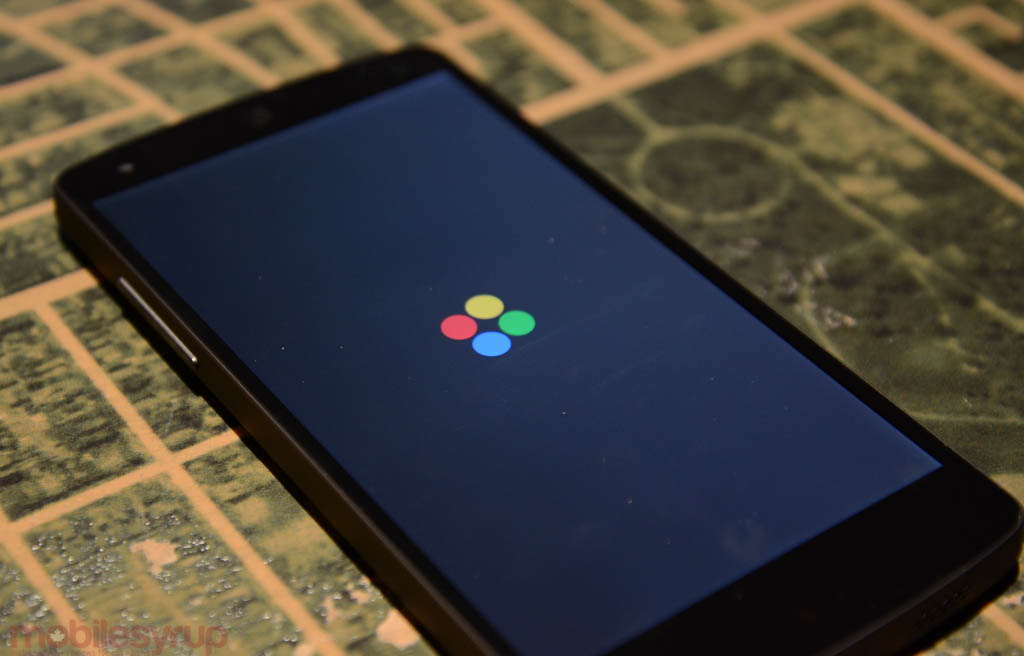
But the Nexus 5 shares the same general design as its predecessor, with a power button on the right side and volume button on the left. This time, though, they are made of a sturdy ceramic that are sure to withstand hundreds of thousands of presses through their lifetimes.
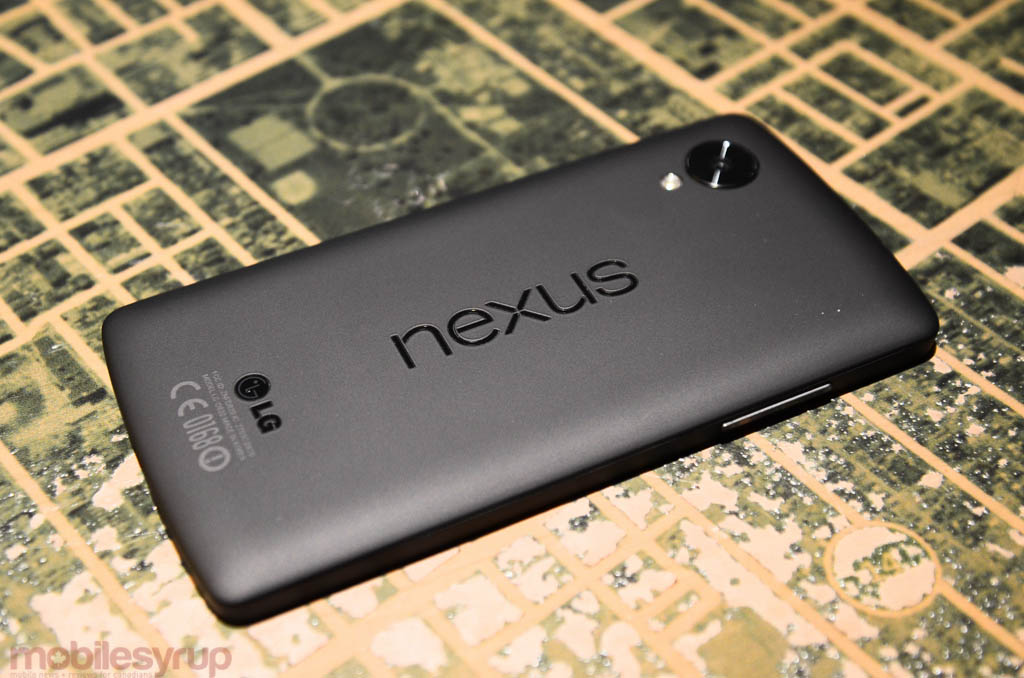
On the back, the Nexus logo has been vertically aligned and is much larger, and the material is a rubbery matte plastic that is less prone to slipping off surfaces and ignominiously cracking.
At 69x138mm wide and long respectively, the Nexus 5 is roughly the same width and moderately taller than the Nexus 4. It also feels much nicer in the hand, thanks to a side bezel that shares the same rubbery material as the back. Indeed, this may be the most comfortable 5-inch device on the market.
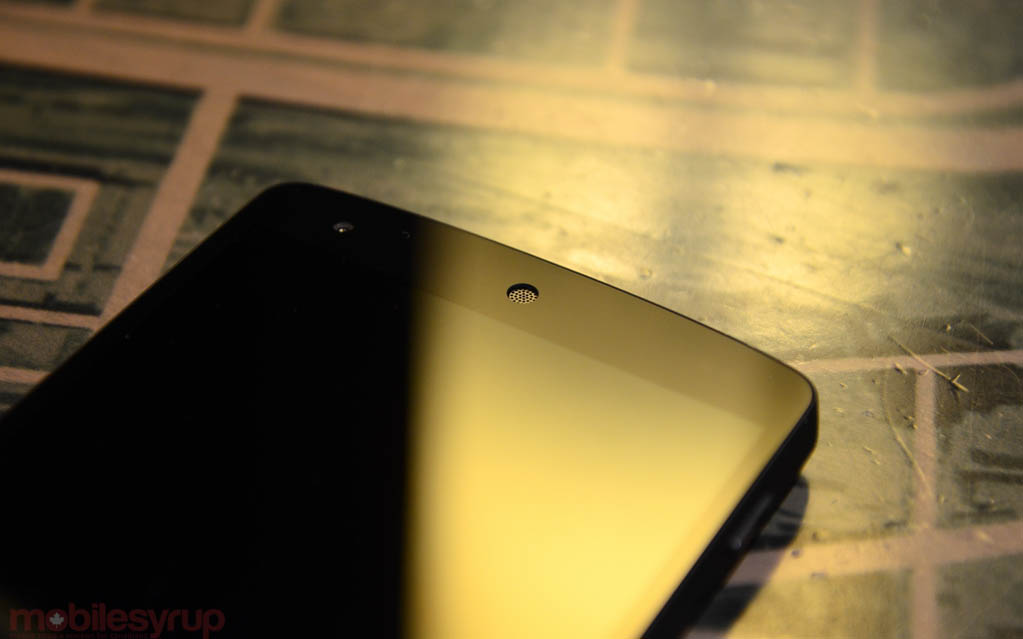
One relatively unique aspect of the device is its centre-oriented rounded headpiece, which was dissected in the phone’s many leaks without definitive conclusion. In person, it looks fantastic, and its minimalism is overshadowed only by its attention to detail.
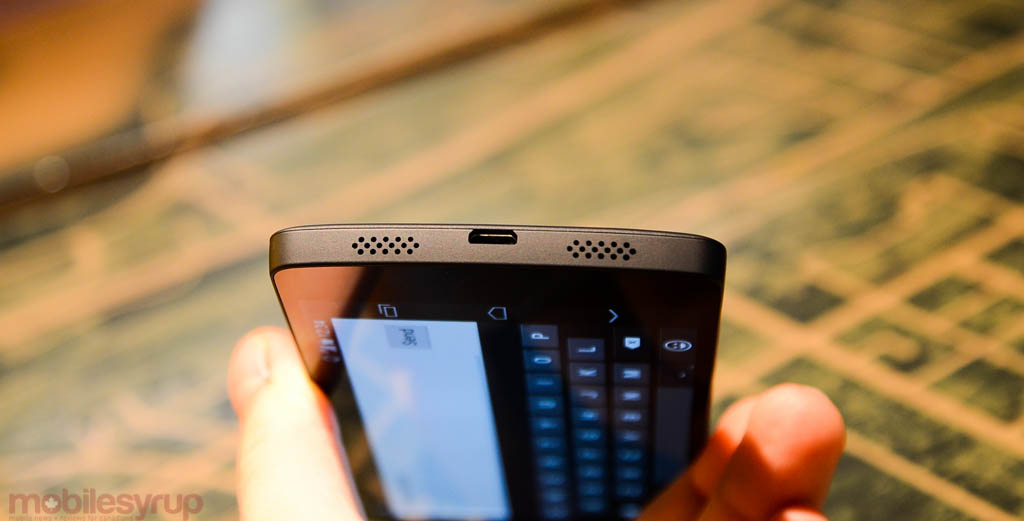
The bottom of the phone houses the single mono speaker (on the left) and the main microphone (on the right), buoying the dual-function microUSB/SlimPort in the middle. Initial testing found the speaker relatively low at maximum volume, but it was not overwhelmingly softer than the average Android device on the market.
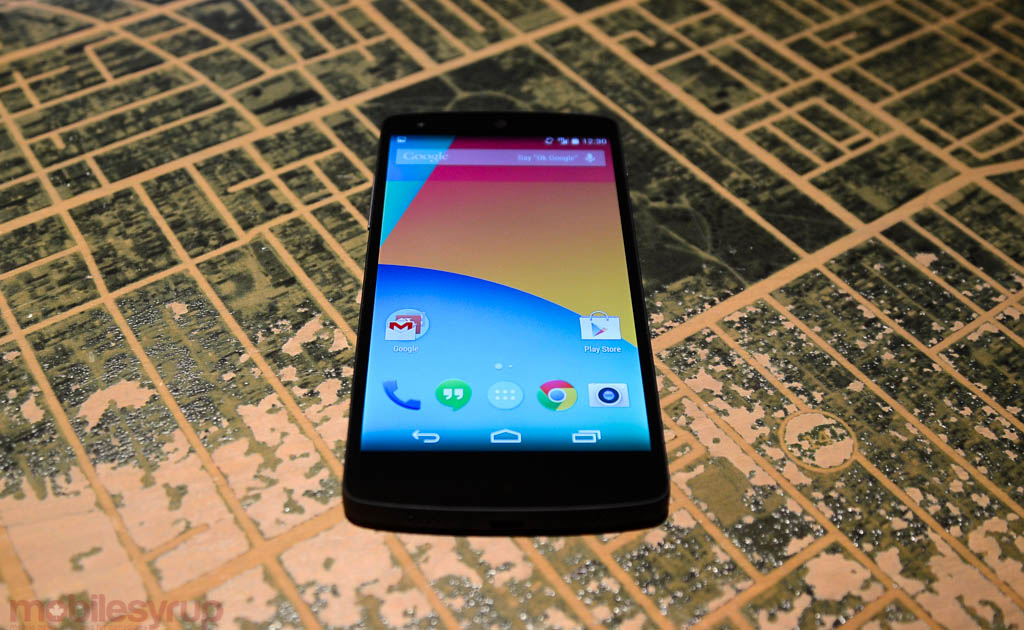
The Nexus 5’s screen is also something to behold: while it shares the same IPS technology as the LG G2, which we acclaimed as the best mobile display on the market, it is slightly smaller and therefore sharper. We haven’t had time to compare the fidelity of the two screens side by side, but can safely say that they share excellent colour saturation, unmatched viewing angles and extremely good touch response. Recall, if you will, that the Nexus 4 had some firmware-related responsiveness issues, and we’re glad to see these addressed on its successor.
We haven’t had time to play with the camera yet, but from our initial testing we can confirm it is a huge improvement over the Nexus 4. Its f/2.56 aperture is quite a lot narrower than we hoped, but the 8MP sensor should be tuned to stay open longer due to the implementation of optical image stabilization.
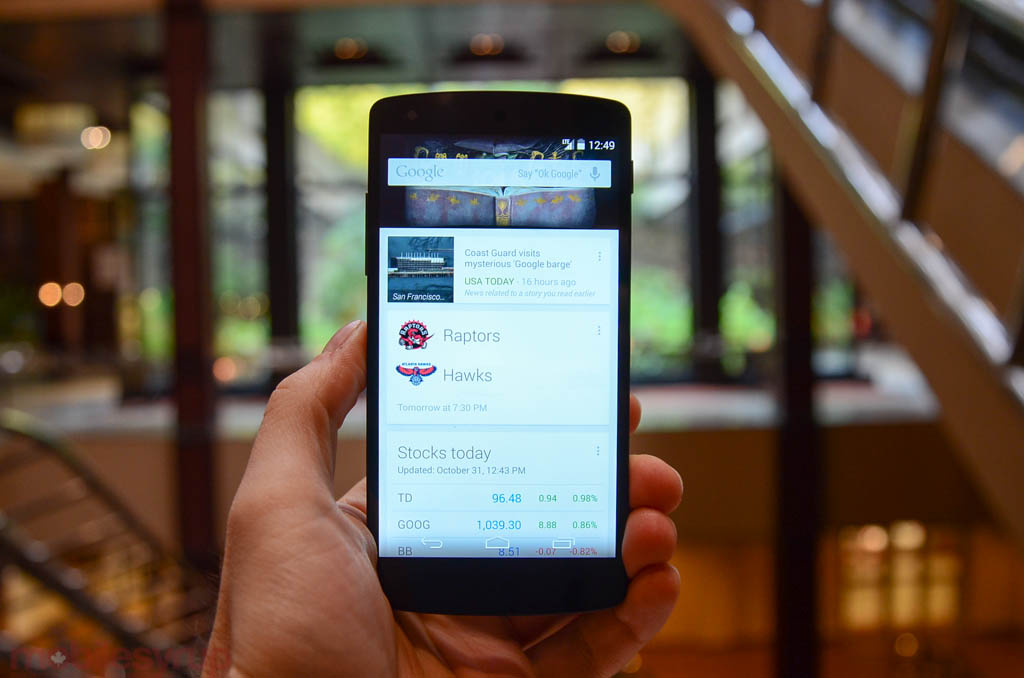
Android 4.4 KitKat
Of course, the second half of the story is Android 4.4 KitKat, the newest version of Android. Though it will look familiar to any current Nexus owner, KitKat substantially rounds the corners and smooths the edges of an OS that was once considered quite… rough.
The first thing you’ll notice is the revamped home screen. The status bar is not transparent, with white text replacing the blue hue of post-Ice Cream Sandwich interfaces. Translucency is a big part of KitKat, and Google takes advantage of the Snapdragon 800’s snappy Adreno 330 GPU.
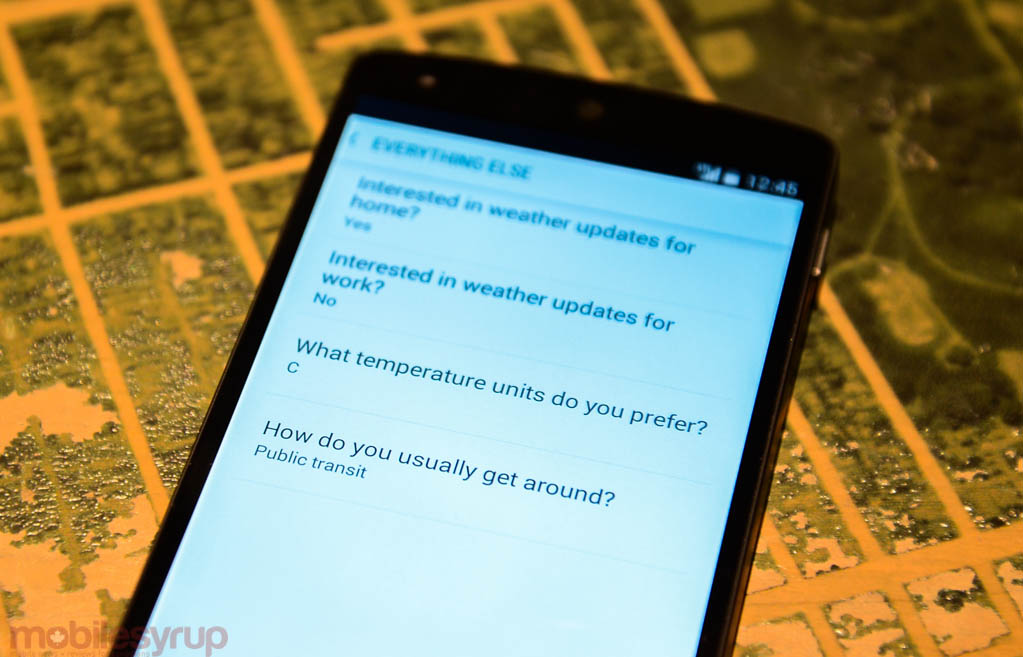
You’ll notice only two home screens by default, and a permanent left-side Google Now area. You can also say, “OK, Google” to activate Google Now from within the new launcher, but it unfortunately does not extend to the whole operating system — the Moto X this is not. The Settings area of Google Now has been cleaned up significantly, as it’s very clear what you can and cannot do. We’ll delve further into the new features in our review, but it now feels less a part of the Search app and more an integral part of the OS.
Like the Google Edition versions of the HTC One and Galaxy S4, KitKat’s icons are bigger than before, and though some have been redesigned — Dialler and Camera, for one — this is still a very similar experience.
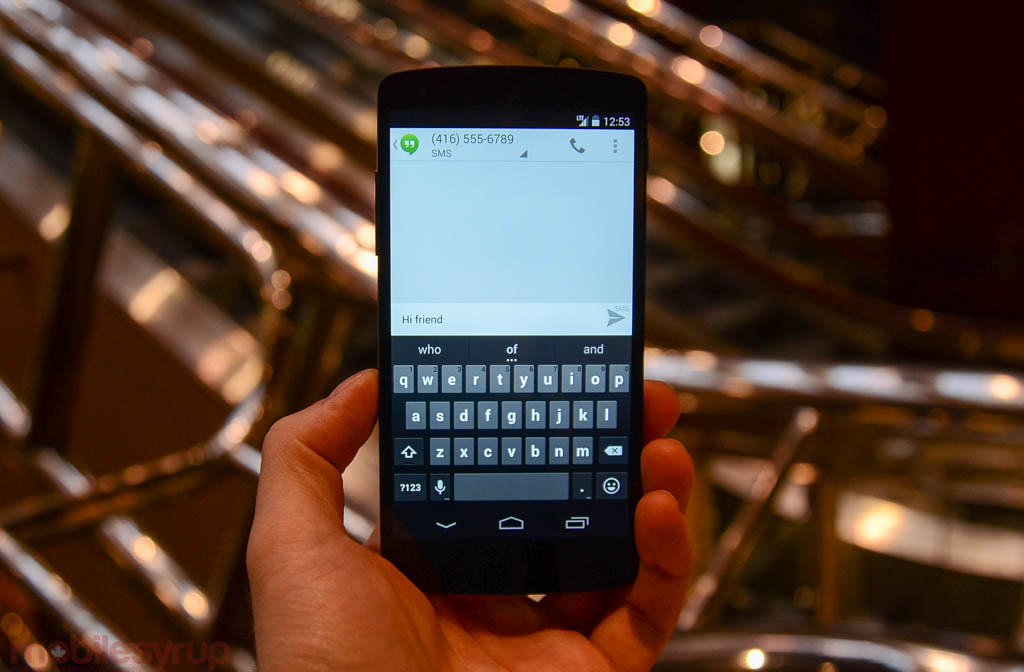
Of course, functionality within the apps has been revamped, as expected. For one, Hangouts has now taken over as the default SMS app which, as previously announced, is now customizable within the Settings.
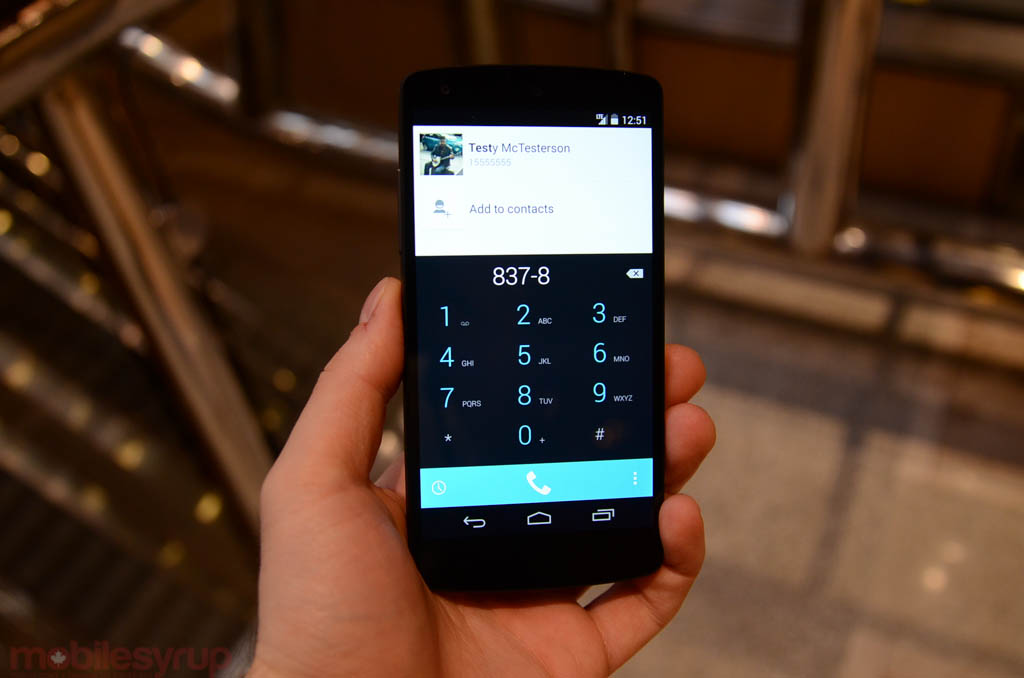
The Dialler app has also been revamped to show information from non-contacts. You will see avatars and bits of information from businesses that have registered with Google’s Local Business database, too.
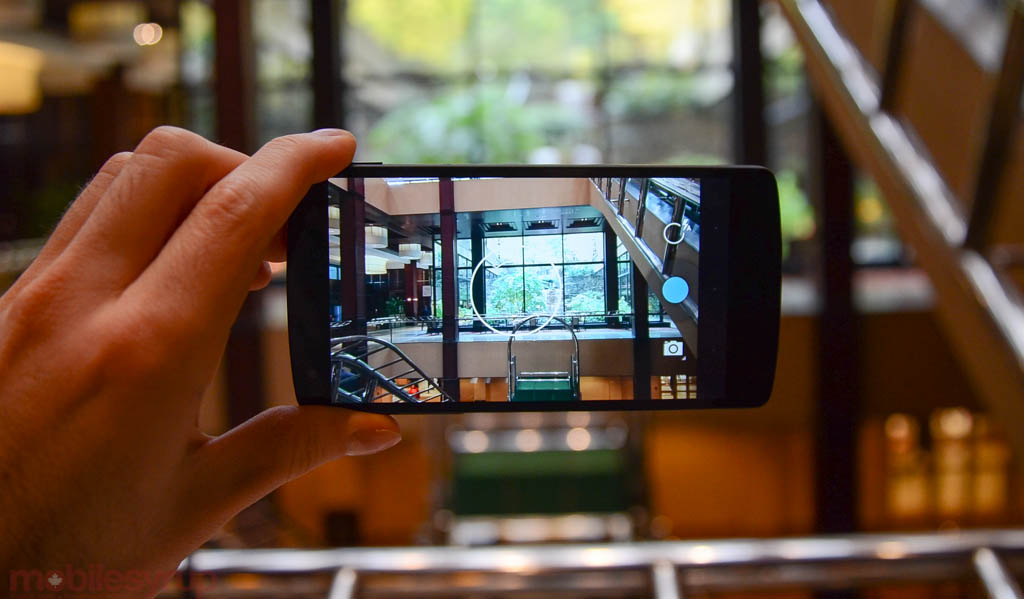
The camera interface doesn’t look to have changed too much from the latest version of Jelly Bean, though we’re certain the shutter is more responsive than before.
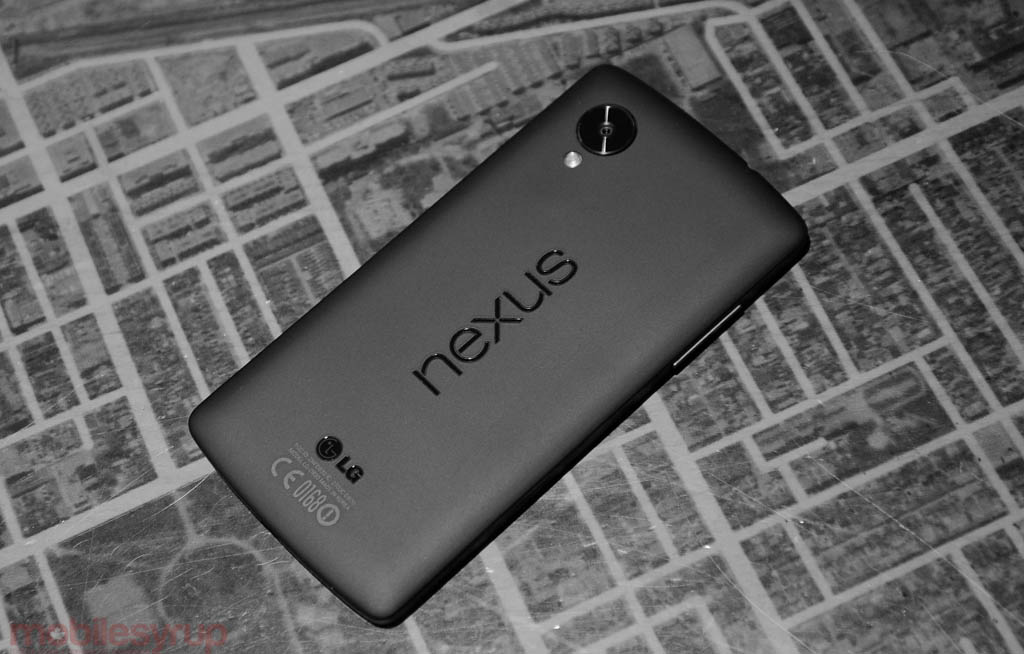
Finally, because this is new hardware, we tested the Nexus 5 on Bell’s AWS LTE network, and it worked without a hitch. The North American SKU does not support Band 7, which equates to Rogers’ 2600Mhz LTE Max network, but it theoretically supports 150Mbps downlink for if and when the carriers roll out LTE-A in the coming years.
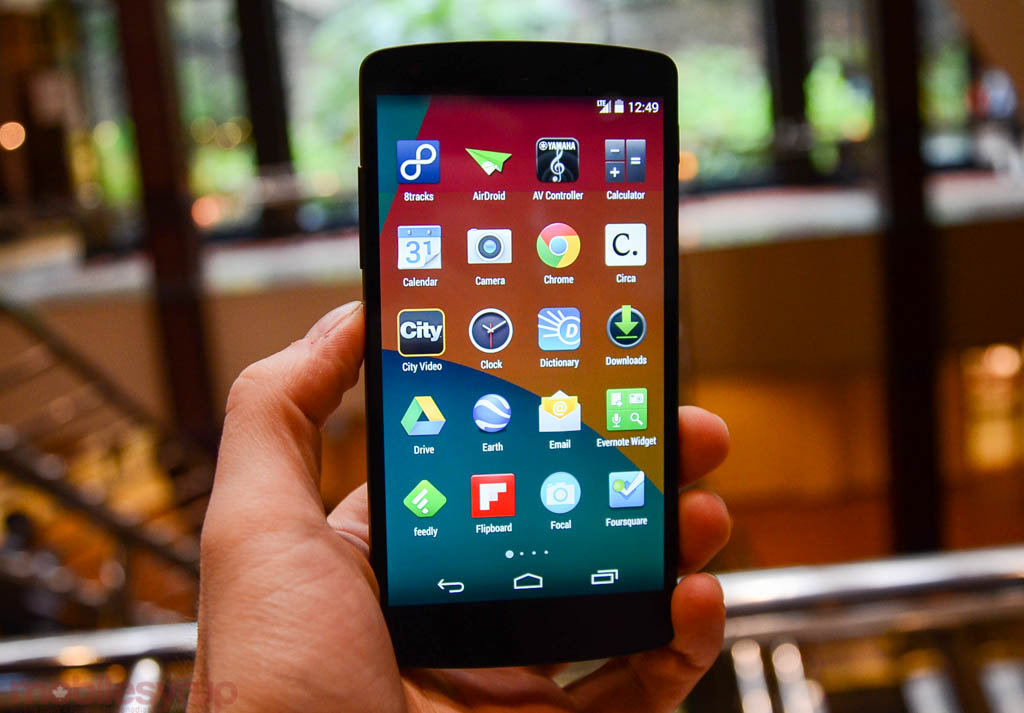
We’ll have lots more on the Nexus 5 and Android 4.4 KitKat in the coming days and weeks. Now that it’s official, we’ll focus on how Google plans to improve performance on low-end hardware with 512MB of RAM with the new software, along with many other form factors like wearable technology, with KitKat.
We’ll also be doing an in-depth camera comparison with all the major devices across different platforms to see which one reigns supreme.
Finally, we’ll ask whether it’s better to pay more upfront for a phone — like the $349/$399 for the unlocked Nexus 5 — or to go through a carrier.
The Nexus 5 is available now from Google Play in black or white versions. It costs $349 for the 16GB model and $399 for the 32GB model.
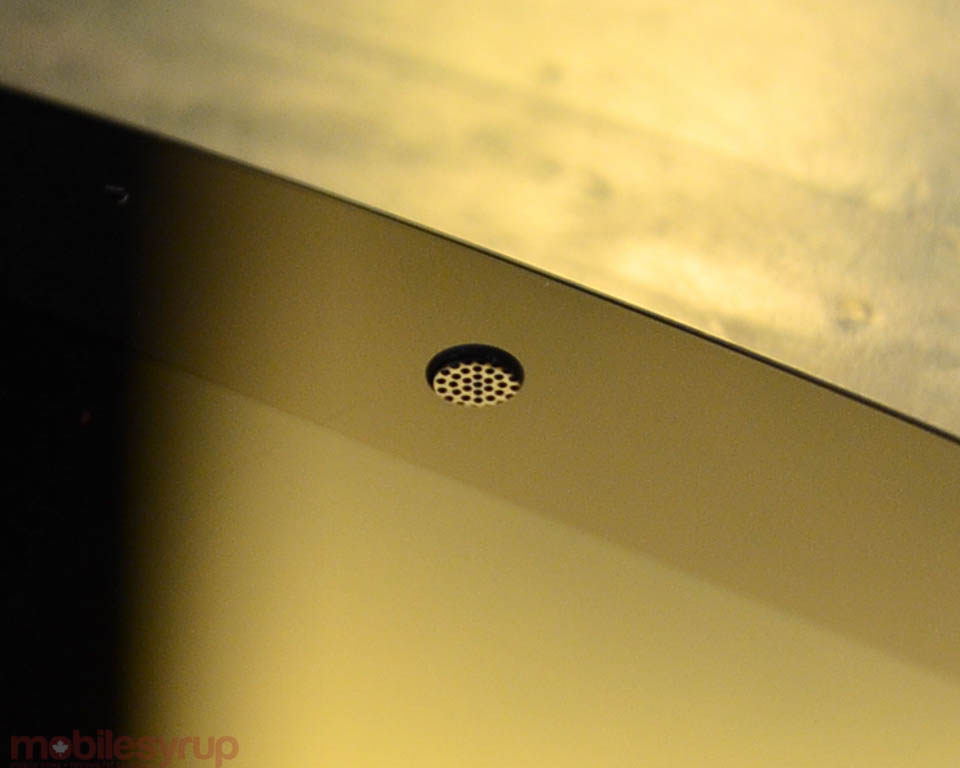
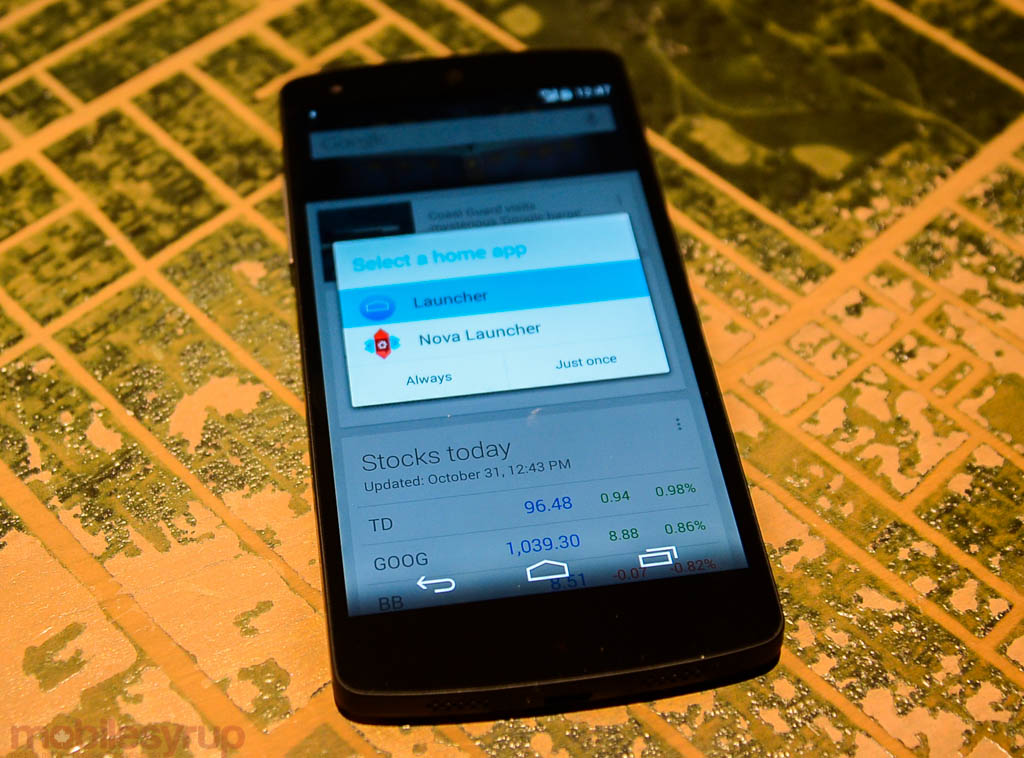
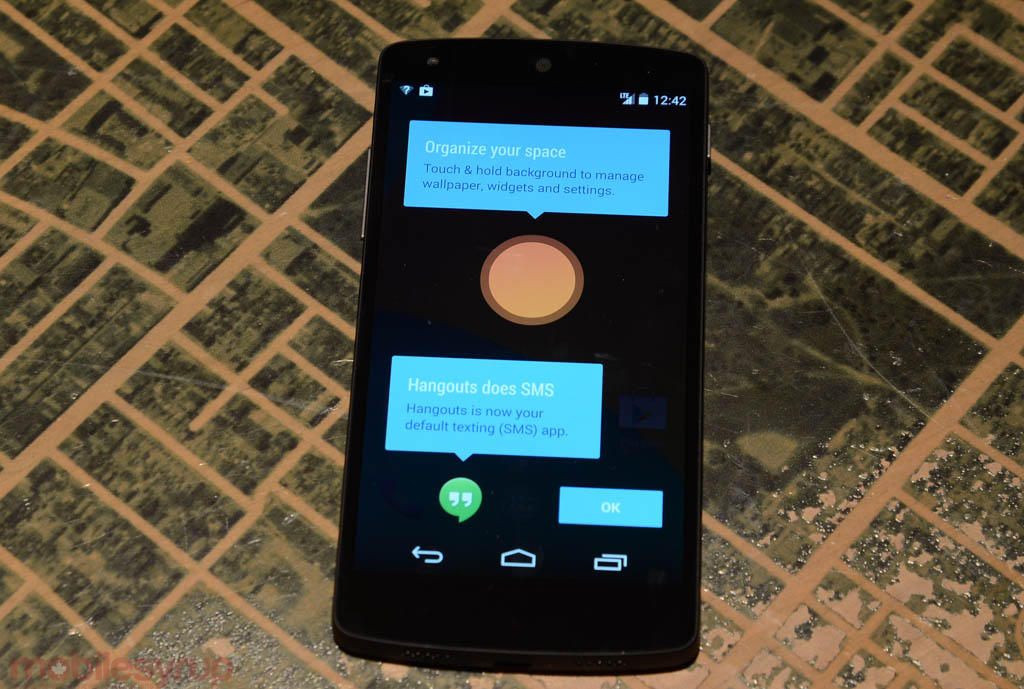
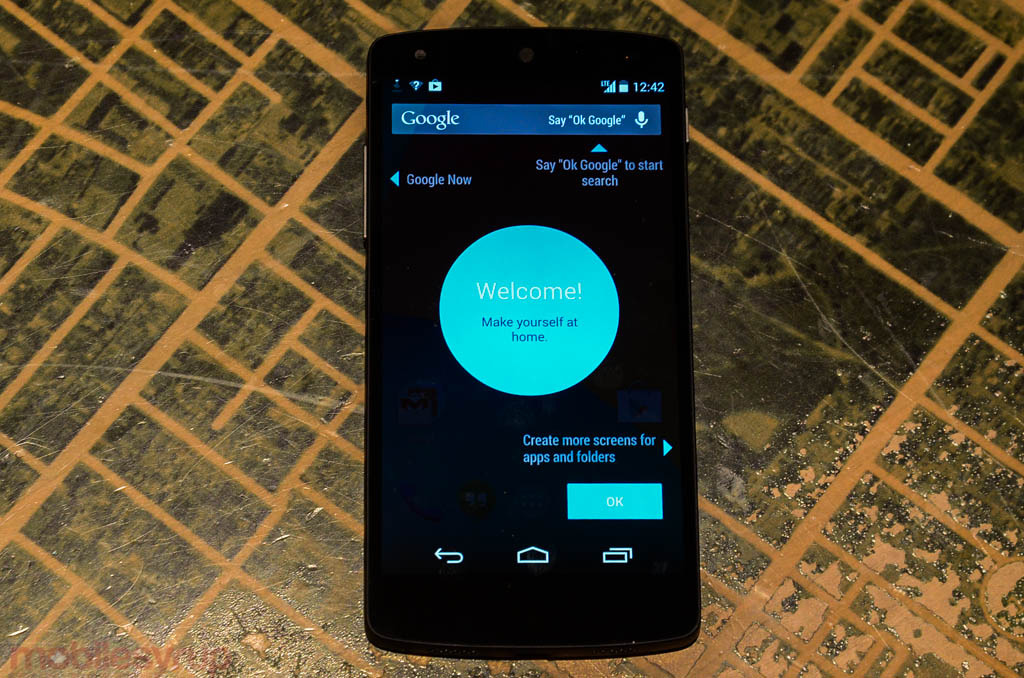
MobileSyrup may earn a commission from purchases made via our links, which helps fund the journalism we provide free on our website. These links do not influence our editorial content. Support us here.


